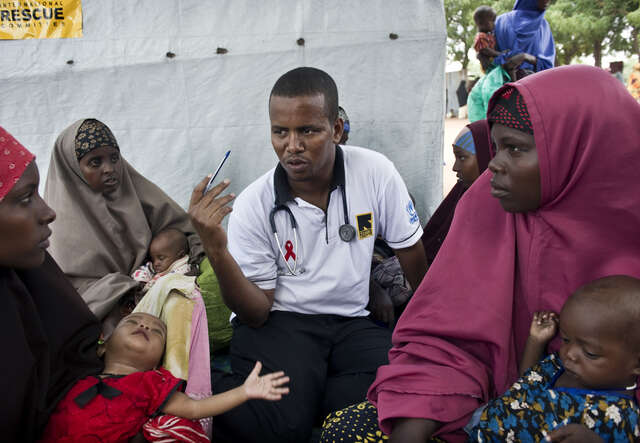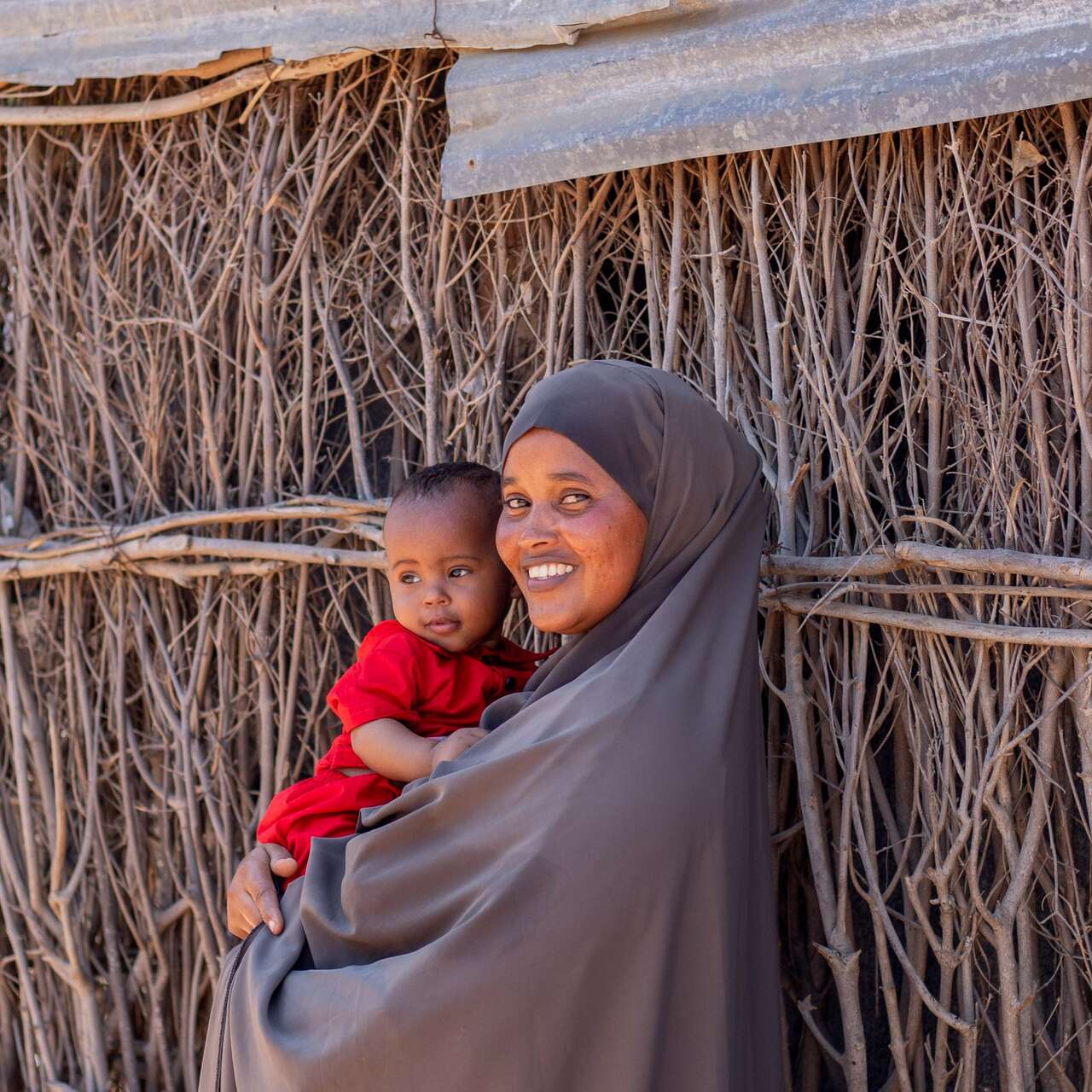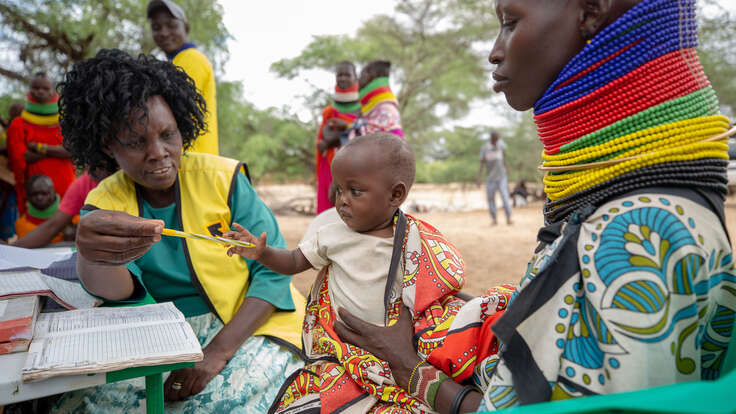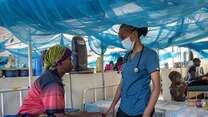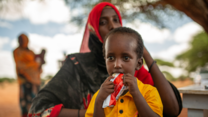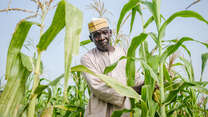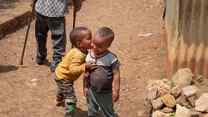Country facts
- Population: 56.2 million
- Refugees and asylum seekers: 774,000
- Rank in Human Development Index: 152 of 191
IRC response
- Started work in Kenya: 1992
- Clients reached in 2023: 570,000
A multitude of factors, including climate change, record-breaking droughts, and unexpected flooding, have combined to create a protracted crisis in Kenya, leaving millions without adequate access to food and essential resources.
Kenya is emerging from four consecutive failed rainy seasons and the country’s worst drought in 40 years, which ended in 2023. El Niño-induced flooding followed, causing vast displacement, damaging pieces of critical infrastructure and disrupting livelihoods across the country.
The combined impacts of these climate shocks have significantly exacerbated food insecurity in Kenya. Currently, 1.9 Million people, 12% of the population are facing food insecurity with over 800,000 children facing acute malnutrition.
Despite immense needs, international donors have provided just 20% of the funds pledged for critical drought and flood relief efforts. World leaders must fund Kenya’s humanitarian response plan to curb further deterioration of the ongoing crisis.
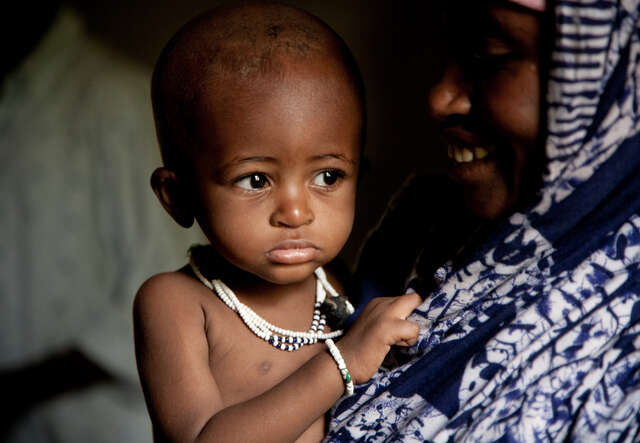
Kenya faces a multitude of interconnected humanitarian challenges that severely impact its population.
Nearly 34% of Kenyans live below the poverty line, with millions of families finding it difficult to meet their basic needs. Conditions are exacerbated by the combined impacts of drought and flooding and the impact of Covid-19 which have disrupted access to clean water, increasing the risk of malnutrition and spread of communicable disease, like cholera.
Kenya has graciously welcomed refugees from neighboring countries but struggles to meet their needs without adequate international support. Displaced families are often forced to seek shelter in overcrowded and unsafe housing.
Women, children and people displaced by crisis are especially at risk of abuse and exploitation, with protection needs remaining high for vulnerable groups across Kenya.
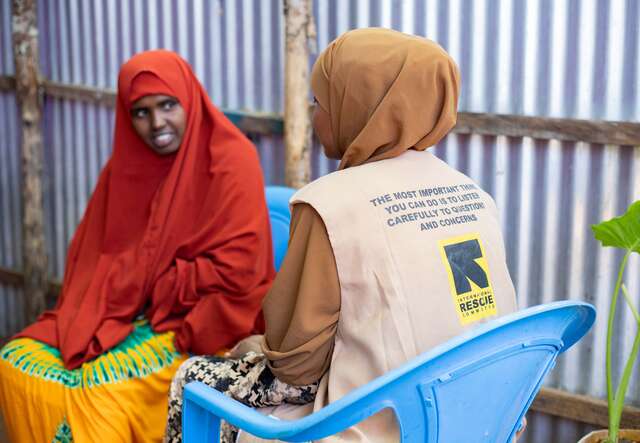
Since 1992, the International Rescue Committee (IRC) in Kenya has provided life-saving services to vulnerable local and refugee communities. In 2023, the IRC worked in close collaboration with governments, community organizations, and NGOs to maximize our impact and deliver services to over 570,000 clients.
The IRC delivers programming in Kenya’s Turkana, Samburu, Lamu, West Pokot, Kajiado, Garissa and Nairobi Counties. Our work includes:
- Partnering with the Ministry of Health, UNHCR, and other stakeholders to deliver high-quality integrated primary healthcare, reproductive health services, and nutritional support, while also focusing on capacity building within affected communities;
- Supporting clients through livelihood programming, helping vulnerable families attain economic independence;
- Assembling a consortium of partners to reach teachers with sustained, comprehensive, and continuous professional development that will improve the quality of instruction for, and the holistic well-being of, children in Turkana and Garissa counties;
- Enabling women and girls to reach their potential, free from violence and inequality;
- Implementing Protection and Rule of Law (PRoL) interventions to promote the safety of refugee and host communities, and to provide support to victims of violence;
- Embedding the Governance, Advocacy, and Systems Strengthening program within other IRC Kenya initiatives, collaborating closely with the government and other stakeholders, and empowering people to influence decisions that affect their lives to ensure the program is integrated into existing efforts, works hand-in-hand with key partners, and gives people the power to shape decisions that impact them;
- Fostering climate resilient communities that are knowledgeable about potential risks, prepared for hazards, and equipped with the ability to respond to shocks and stresses through disaster risk reduction and climate change programming.
